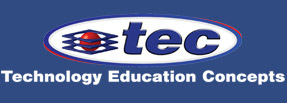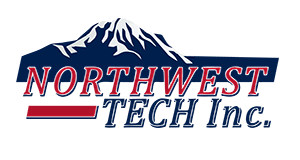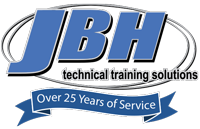The world of manufacturing is changing rapidly, and these changes have important implications for career and technical education (CTE).
The ability to connect people, processes, and systems together with real-time information, combined with advances in machine learning technology, is transforming operations in powerful new ways. Educational leaders need to understand these changes so they can prepare students effectively for the workplaces of the future.
Industry 4.0 and the Internet of Things
Manufacturing is currently in the midst of the Fourth Industrial Revolution, known as Industry 4.0.
The First Industrial Revolution introduced steam power to mechanize production. The Second pioneered the production line to create mass production. The Third used computers to automate production. Now, Industry 4.0 is building on the advancements of the Third Industrial Revolution by leveraging the internet, artificial intelligence (AI), and the power of smart networks to bring automation to a whole new level.
In Industry 4.0, employees and machines communicate with each other and share data in real time through smart sensors, controllers, and other Internet of Things (IoT) devices. Industry 4.0 involves a more intelligent, interconnected, and holistic approach to manufacturing, allowing for better insight and collaboration across companies, departments, and business partners.
Industry 4.0 empowers manufacturers and supply chain operators to understand and control every aspect of their operations more effectively, enabling them to leverage real-time information to streamline processes and improve productivity. For instance, advanced software and data analytics provide real-time visualization into the health and status of systems, while AI allows systems perform tasks autonomously, make decisions and predict maintenance requirements by tracking performance parameters.
IIoT use cases
The connectivity between people, data, machines, and smart devices used in advanced manufacturing is known as the Industrial Internet of Things (IIoT). The connectivity of things in industry allows the collection of data and the exchange of information that leads to the ability for smart processes and advanced applications to analyze and improve productivity.
Here are some of the ways this IIoT is revolutionizing manufacturing.
- Predictive maintenance: Advanced analytics enable manufacturers to anticipate when problems will arise before they actually happen. In the past, preventive maintenance was a manual process that occurred on a set time schedule. With IIoT systems in place, this process can become more automated and streamlined. Systems can intelligently sense when conditions indicate that problems are about to occur or machinery needs to be fixed, enabling manufacturers to head off issues before they become larger problems.
- Asset tracking and optimization: IIoT solutions give manufacturers better insight, visibility, and control over the assets they’re creating, as well as all production and distribution processes. These solutions help manufacturers become more efficient by keeping track of their inventory and its quality at every stage of the supply chain and by allowing them to centrally manage key processes.
Implications for CTE
As intelligent automation has transformed a growing number of services and business processes, this rapid shift has created a huge demand for more highly skilled workers who can program, manage, and interpret the data from IIoT sensors and other devices. CTE programs can help meet this demand by integrating IIoT devices and training into their curriculum.
For example:
Predictive maintenance is accomplished through the use of advanced smart sensors that perform what is known as Condition Based Monitoring (CBM), looking for anomalies in temperature, sounds, and other stimuli to identify potential equipment failures before they occur.
The Smart CBM Lab for Industry 4.0 from Intelitek includes smart sensor units for mounting onto moving parts such as motors, as well as software for configuring and monitoring the status of these sensors remotely. With this equipment, students can learn how to program and interpret the data from CBM sensors, so they’re well prepared to work with this technology within advanced manufacturing environments.
Asset tracking using smart actuators and sensors like RFID can be used on raw materials, work in progress, and finished goods for multiple different products simultaneously. MES (Manufacturing Executions System) apps use this data in real time to align with current market demand and customer orders. Using live tracking of parts enables a flexible mass production capability and a more efficient production program.
In Intelitek’s SmartCIM 4.0, students integrate smart sensors, automated storage and retrieval, and a real production environment with an MES to learn how the end to end process operates and prepare them for jobs in industry.
Integrating IIoT devices and training into CTE programs at the high school and community college levels will help these programs remain on the cutting edge by reflecting current industry trends—ensuring that employers’ needs are met and that students have the skills they need for Industry 4.0 success.
Graham Celine is the Vice President of Business Development and Marketing for Intelitek, a technology education company focused on STEM education, robotics, programming, and technology training for machining, manufacturing, industrial maintenance, and other careers.
























